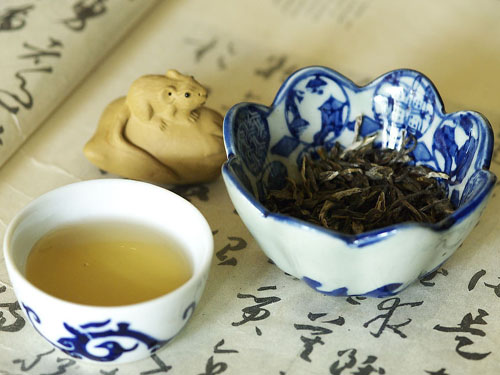Evening Party Dress Embroidery Fabric Embroidered Silk Fabric For Dresses,30D Chiffon Embroidery Fabric,Party Dress Embroidery Fabric,Evening Dress Embroidery Fabric SHAOXING MINGHEE EMBROIDERY CO,LTD , http://www.minghee-china.com In recent years, the collection of Pu'er tea has become popular. Many tourists travel to Yunnan and tend to purchase some Pu'er tea tasting and collection. However, there are many varieties of Pu'er tea on the market, including raw tea and ripe tea, loose tea and pressed tea, wild arbors and shrubs, and more grades. Only scattered tea is divided into 11 grades. Many tourists can distinguish the quality of Tieguanyin, oolong tea or other kinds of tea, but they have the ability to determine the quality of Puer tea and how few are good or bad. Therefore, it is often based on price theory rather than on quality.
In recent years, the collection of Pu'er tea has become popular. Many tourists travel to Yunnan and tend to purchase some Pu'er tea tasting and collection. However, there are many varieties of Pu'er tea on the market, including raw tea and ripe tea, loose tea and pressed tea, wild arbors and shrubs, and more grades. Only scattered tea is divided into 11 grades. Many tourists can distinguish the quality of Tieguanyin, oolong tea or other kinds of tea, but they have the ability to determine the quality of Puer tea and how few are good or bad. Therefore, it is often based on price theory rather than on quality.
If you want to have a high understanding of the authenticity, goodness, bad taste, fragrance, timing, and quality of Puerh tea, you must cultivate the passion and love for Pu'er tea.
Pu'er Tea is dominated by Xishuangbanna, Simao, and Linyi, which are arborous tea leaves growing in the middle and lower reaches of the Minjiang River, and is particularly good for teas from Bohai, Zhenyuan, Jingmai, Yiwu, Jingdong, Jinggu, and Brlangshan. .
To further inspect the texture of the tea, you must master it through color, aroma, taste, shape, etc. At this time, you should use eye, nose, and hand for identification at the same time.
1, raw and cooked to distinguish: The tea will be collected by killing, rubbing, drying, autoclaving and drying to be called green cake. After cooking, it is cooked.
From the aroma, soup color, the bottom of the leaves to identify cooked. The tea soup color is chestnut red, and the cooked tea is dark chestnut, even close to black. The dried tea leaves have chestnut to dark maroon colors, and the leaves are full of soft texture and liveliness. The leaves of ripe tea are mostly dark chestnut or black, and the leaf strips are dry, thin and hard.
2. Discrimination of wet positions in dry warehouses: The sturdy ropes of dried stalked tea are firm, fresh in color, and glossy in oil, which fully expresses the vitality of tea. The strips in the wet store were loose, dark in color, rough and had green mold or gray mold on the surface of the tea leaves. The soup color of the dried buckwheat tea was chestnut red at the bottom of the leaf, while the soup color and the bottom of the leaf of the wet casket tea were dark red and black.
3, the identification of aroma: Pu'er tea has lotus, orchid, musk and fragrance four categories. In particular, orchids and musks must be the old tea gardens in Yunnan. The arbors of tea trees are mixed with eucalyptus. As for the new tea garden with dwarf shrubs, only the hetian and incense were left.
4, the taste of the difference: good tea by sweet and refreshing brewing, the more bubble more sweet. A little bit of tea has a bitter taste, and more often it has a sour taste. Most tasting masters recognize that "the taste of odorless" is Pu'er's best product.
5, Throat Run discrimination: good Pu'er tea entrance throat can be nourished, immediately relieve the dry feeling. Senior taster masters, attaches great importance to the characteristics of throat Run. Some aged Pu'er is too tight in the storage process and immediately brewed after opening. It will feel dry. When it is stored in a large container for a while, the sensation of naturalness disappears.